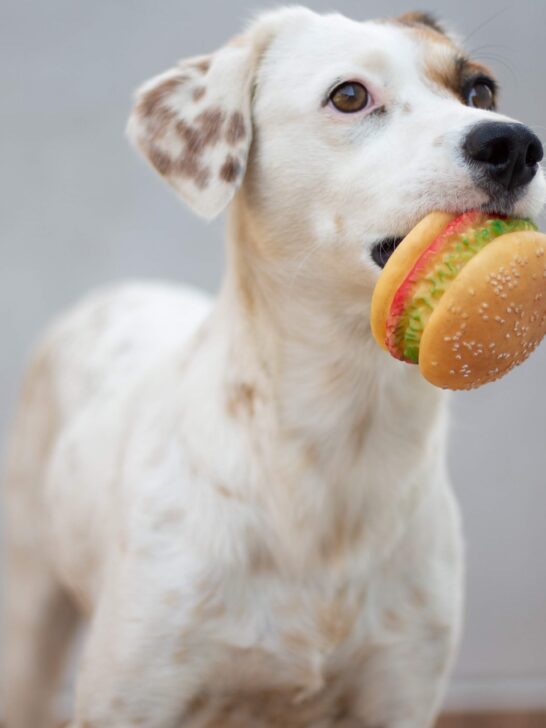Ice Cream for Dogs: Safe Treats and Recipes
Dogs can have ice cream, but not all kinds are safe for them. A small lick of plain vanilla or strawberry ice cream made for people might not hurt them right away, but most human ice cream has ingredients that aren’t good for dogs. These include lots of sugar, dairy, and toxic substances like chocolate or xylitol. Luckily, there are special “ice creams for dogs” made with ingredients that are safe for their stomachs. This article will explain what makes dog ice cream safe, how it’s different from people’s ice cream, and how you can make it at home for your pet.

What Is Ice Cream for Dogs?
Dog ice cream, sometimes called “pup cream” or “doggy ice cream,” is a frozen treat made just for dogs. Unlike regular ice cream, which is sweet and often has artificial stuff in it, dog ice cream uses safe, simple ingredients. The goal is to give dogs a cool and creamy snack that won’t hurt their stomachs, especially on hot days.
This treat is all about leaving out the things dogs can’t eat and focusing on things that are safe and easy to digest. Instead of strong flavors and lots of sugar, the recipes use gentle ingredients that match what dogs need to eat.
How Is Dog Ice Cream Different From Regular Ice Cream?
Dog ice cream and normal ice cream are very different. Ice cream for humans usually has lots of milk, cream, sugar, and fake flavors. Many dogs can’t handle dairy because, after they grow up, they stop making the enzyme that breaks down milk sugar (lactose). If they eat dairy, it can make them gassy or give them diarrhea. Plus, human ice cream has a lot of fat, which can cause a painful health problem for dogs called pancreatitis.
Human ice cream can also have things that are dangerous or deadly to dogs, like chocolate, grapes, raisins, or xylitol (a sugar-free sweetener). Dog ice cream avoids all these ingredients and uses only things that are safe and easy for dogs to handle.

Common Ingredients in Dog-Friendly Ice Cream
Dog ice cream often has a base of plain, unsweetened yogurt (especially Greek yogurt, since it’s lower in lactose). Some recipes use non-dairy bases like mashed banana or pumpkin. To add flavor, people mix in fruits that are safe for dogs, like strawberries, blueberries, or bananas, and sometimes natural peanut butter (without xylitol). Cooked oatmeal and a bit of cinnamon can also go in for health benefits and taste. These ingredients are picked carefully so dogs can enjoy the treat without getting sick.
Is Ice Cream Safe for Dogs?
Most regular ice cream for people is not safe for dogs. A small amount probably won’t hurt, but it’s not a good idea to give it as a treat. This is because of what’s in most store-bought ice cream-dogs just can’t digest it the way people can. Knowing why these ingredients are bad for dogs is important.
Why Can Regular Ice Cream Be Bad for Dogs?
The main problems in human ice cream are milk, sugar, and other additives. Adult dogs stop making much of the enzyme they need to digest milk, so eating dairy can upset their stomachs or cause diarrhea. Also, ice cream’s sugar can make dogs gain weight, which can lead to illnesses like diabetes or tooth problems.
The fat in ice cream can also cause pancreatitis, an illness that makes dogs very sick and often needs a vet’s help. Signs of this can be throwing up, stomach aches, not wanting food, and being very tired.
Problems With Sugar, Dairy, and Fake Additives
Sugar can lead to obesity and other health concerns in dogs. Extra weight puts stress on their joints and organs and can cause dental issues. Dairy often leads to messy digestive problems, since most dogs can’t break down lactose. Additives like color and flavor can lead to allergies in some dogs. The big danger is sugar substitutes like xylitol-it’s very poisonous to dogs. Xylitol can make blood sugar drop fast, cause seizures, liver failure, or even kill them. Always check food labels for this.
What Happens if a Dog Eats Human Ice Cream?
If your dog eats people’s ice cream, what happens depends on how much they eat, what’s in it, and if your dog is more sensitive than others. Some might just get gassy or have soft stool, but others might throw up, have diarrhea, or feel pain. If the ice cream has xylitol or chocolate, your dog could be in serious danger and need urgent care from a vet. Pancreatitis is also a risk from high fat content. It’s always safest to avoid sharing your ice cream and stick with safe, dog-specific treats.
What Ingredients Should Never Be in Dog Ice Cream?
If you make or buy ice cream for your dog, you need to be careful with the ingredients. Some things people can eat safely can make dogs very sick or could even kill them. Knowing what to avoid helps keep your dog safe.
Chocolate, Xylitol, Grapes, and Other Dangerous Foods
- Chocolate: Has a substance called theobromine that dogs can’t clear from their bodies, making even small amounts dangerous or deadly. Chocolate causes vomiting, shakes, heart trouble, and can kill dogs.
- Xylitol: A sugar substitute found in many sugar-free foods, including some peanut butters. Xylitol drops a dog’s blood sugar dangerously and can cause seizures, liver failure, or death.
- Grapes and Raisins: Even a few grapes or raisins can cause kidney failure in dogs. The reason why is unknown and the effect is unpredictable, so it’s best to avoid completely.
- Macadamia Nuts: Rare in ice cream, but still very toxic and can cause wobbliness, vomiting, and overheating.
Lactose and High Fat Issues
Even if something isn’t deadly, high levels of lactose and fat are problems. Most adult dogs can’t digest milk, leading to stomach ache, gas, or diarrhea. High fat content can set off pancreatitis, discussed earlier, and make dogs very ill. So, even ice cream without obvious dangerous foods can be a bad idea for your dog if it&s full of milk and fat.
Why Give Dogs Safe Ice Cream?
Special dog ice cream is a nice way to give your pet a treat and serve a useful purpose at the same time. These snacks can help dogs cool off or be used as rewards for learning and good behavior.
Helping Dogs Stay Cool
Dog ice cream is a great way to help your dog cool down in hot weather. Dogs can get hot quickly, and a cold treat helps lower their body temperature. Unlike plain ice cubes, which some dogs won’t chew, dog ice cream is tasty and soft enough to easily eat. It’s an enjoyable way for them to cool down after playing or walking outside on a warm day.
Boosting Hydration
Because dog ice cream is mostly made from yogurt or similar liquids, it adds to your dog’s daily fluids. While it shouldn’t replace water, it can help encourage dogs who don’t drink enough, especially if they’re ill or need extra hydration. Homemade ice cream can also include bone broth, which adds extra nutrients and more moisture.
Rewarding Good Behavior
Dog ice cream works well as a high-value reward. If you use it for training, learning tricks, or as a way to help with stress (like after a visit to the vet), it can keep dogs focused and happy. Because it takes longer to eat than a cookie, it can also keep dogs busy for a while, making it useful for crate training or if your dog has separation anxiety.
Types of Dog Ice Cream
There are many types of dog ice cream out there, so you have choices, whether you want to buy something ready-made or make it at home. There are also versions for sensitive or allergic dogs.
Popular Store-Bought Dog Ice Creams
If you want something fast, there are dog ice cream brands sold at pet stores and online. These products avoid all harmful ingredients and use safe flavors like peanut butter, banana, and vanilla. Brands like Pooch Creamery and The Lazy Dog Cookie Co. make these treats with low-lactose dairy or dairy-free bases, and only dog-safe extras. They’re a good option if you don’t have time to make ice cream at home.
Homemade Dog Ice Cream
If you want to choose exactly what goes into your dog’s snack, making ice cream at home is easy. You’ll know what’s in it and can adjust it to your dog’s needs. Most recipes use plain yogurt or mashed bananas as the base, with fruit or peanut butter for flavor. Homemade ice cream can be made in large batches and frozen for later use.
Dairy-Free and Allergy-Friendly Options
For dogs with allergies, there are dairy-free and hypoallergenic recipes. These use bases like banana, pumpkin, or non-dairy “milks” like coconut (make sure there’s no xylitol). You can skip common allergens and only include ingredients your dog already eats with no problems. Some brands also make limited-ingredient or novel protein (like lamb or fish) ice creams for extra-sensitive dogs.
How to Make Ice Cream for Dogs at Home
Making dog ice cream at home is simple and lets you pick healthy ingredients. It’s less expensive over time than buying pre-made treats, and you can make lots at once.
What to Use and What to Stay Away From
The best homemade dog ice cream uses straightforward and safe ingredients. Here are some common things to include and avoid:
| Ingredients to Use | Ingredients to Avoid |
|---|---|
|
|
Easy Dog Ice Cream Recipes
- Peanut Butter & Banana:
- 1 ripe banana
- 1 cup plain Greek yogurt
- 1/2 cup xylitol-free peanut butter
- Blend together, pour into molds, freeze at least 4 hours.
- Strawberry & Banana:
- 1 ripe banana
- 10 fresh strawberries, chopped
- 1 cup plain yogurt
- Blend, pour into molds, freeze for 4 hours.
- Pumpkin & Yogurt:
- 1 cup plain Greek yogurt
- 1 cup pure pumpkin puree
- Optional: pinch of cinnamon
- Mix and freeze in molds or trays.
Mix and match these safe ingredients for different flavors. Peanut butter, banana, and pumpkin are dog favorites and are easy to use in most recipes.
Storage and Serving Tips
Store homemade dog ice cream in a sealed container in the freezer. They will stay good for up to 8 weeks. If the treat is too hard, let it warm up for a couple of minutes so your dog can eat it more easily. Use ice cube trays or silicone molds for bite-sized servings, especially for small dogs. Offer in small amounts so treats don’t take over your dog’s diet.
How Much Ice Cream Can Dogs Have?
Even safe dog ice cream should be given in small amounts. Too much of any treat can upset your dog’s stomach or cause weight gain. Treats shouldn’t be more than about 10% of your dog’s calories each day, with the rest coming from their usual food.
| Dog Size | Portion Size |
|---|---|
| Small (under 20 lbs) | About 1-2 tablespoons (one small cube) |
| Medium (20-50 lbs) | About 1/4 cup |
| Large (over 50 lbs) | Up to 1/2 cup |
Always start with a small taste to check for sensitivities, especially if your dog is trying a new recipe.
How Often Can Dogs Have Ice Cream?
Ice cream for dogs should not be an everyday snack. Giving it a couple times a week is fine for most dogs, especially in the summertime or as a reward. Too many treats, even healthy ones, can throw off your dog’s nutrition and lead to weight gain.
Other Frozen Treats for Dogs
If dog ice cream isn’t right for your pet, or you want to give something different, there are other cool treats you can try. These are easy, safe, and help dogs cool off or stay hydrated.
Frozen Fruits and Veggies
Many fruits and vegetables are safe for dogs and great when frozen. They have vitamins, are low in calories, and are simple to make. Here are some ideas:
- Sliced frozen bananas
- Frozen blueberries
- Frozen, seedless strawberries (chew or mash for small dogs)
- Watermelon cubes with seeds and rind removed
- Frozen carrot sticks
- Green beans, frozen
Always make sure to remove any pits or seeds before freezing, as some parts of fruit (like apple seeds) are bad for dogs.
Frozen Popsicles and Broth Cubes
- Freeze plain, unsweetened yogurt in molds for a creamy popsicle (can add safe fruits or peanut butter).
- Freeze unsalted bone broth in ice cube trays for a savory, healthy snack.
- Puree fruits and veggies with water or yogurt and freeze for an easy “pupsicle.”
- Freeze yogurt and fruit mixtures inside a toy like a KONG for a longer-lasting activity treat.
These treats keep dogs busy, cool, and add healthy variety without the risks of human ice cream.
Common Questions About Dog Ice Cream
Dog owners often have questions about what their dogs can safely eat and how to serve special treats like dog ice cream. Here are answers to some typical concerns:
Can Puppies Eat Dog Ice Cream?
It’s better not to give ice cream (even dog-safe) to very young puppies. Their stomachs are still adjusting, and even gentle ingredients can upset them. If you want to give a small taste to an older puppy, check with your vet first. It’s safest to stick with treats meant for puppies until they’re older.
Is Vanilla Safe for Dogs?
A lick of plain vanilla ice cream without extras (like chocolate chips, nuts, or xylitol) is less risky than other flavors, but it’s still high in sugar and fat. Even plain vanilla is not a healthy choice, so only use special dog ice cream with natural vanilla flavoring made just for dogs if you want to share this flavor.
Can Dogs Have Sorbet or Frozen Yogurt?
Sorbet is often high in sugar and frozen yogurt for people often contains both sugar and dairy. Both can upset your dog’s stomach. If you want a “frozen yogurt” for your dog, use plain Greek yogurt with no sugar, or freeze blended bananas for a sweet, ice-cream-like treat.
What Should I Do If My Dog Has a Bad Reaction?
If your dog gets sick after eating ice cream (vomiting, diarrhea, not eating, acting tired), keep an eye on them. If the symptoms are mild, wait a few hours, let their stomach rest, and give water. If the reaction is strong, lasts a long time, or you think the ice cream had something toxic like xylitol or chocolate, call your vet right away. If you talk to the vet, give as much info as you can about what your dog ate and how much.























